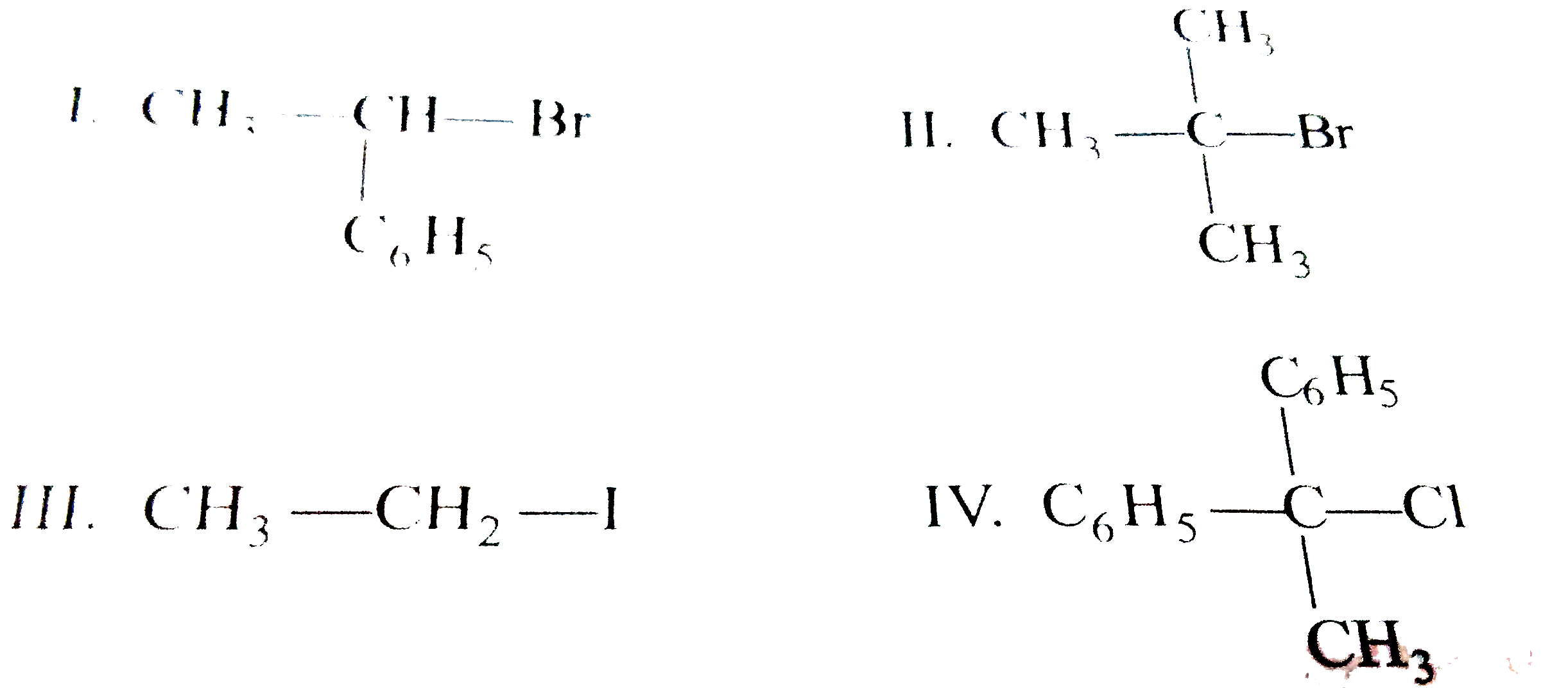In nucleophilic substitution reaction, the order of halogens as leaving group should be :
Step by step video & image solution for In nucleophilic substitution reaction, the order of halogens as leaving group should be : by Chemistry experts to help you in doubts & scoring excellent marks in Class 12 exams.
Updated on:21/07/2023Similar Questions
Nuclephilic substitution reaction is given by those compounds which have nucleophilic groups as leaving groups. The weaker the basicity of a group of the substrate, the better is its leaving ability.
In nucleophilic substitution reactions, the basicity of leaving group should be less than the incoming nucleophilic group. Nucleophilc substitution reaction at sp3 -hybridised carbon is either bimolecular (SN2) or unimolecular (SN1). Bimolecular reaction takes place in single step, involving transition state intermediate. In SN2 reaction is preferred if the compound has less steric hindrance.
Unimolecular (SN2) reaction involves two steps and carbonium ion intermediate. Optically active substrates give recemic mixture in these reactions.
Which among the following will give SN1 reaction?

View SolutionNuclephilic substitution reaction is given by those compounds which have nucleophilic groups as leaving groups. The weaker the basicity of a group of the substrate, the better is its leaving ability.
In nucleophilic substitution reactions, the basicity of leaving group should be less than the incoming nucleophilic group. Nucleophilc substitution reaction at sp3 -hybridised carbon is either bimolecular (SN2) or unimolecular (SN1). Bimolecular reaction takes place in single step, involving transition state intermediate. In SN2 reaction is preferred if the compound has less steric hindrance.
Unimolecular (SN2) reaction involves two steps and carbonium ion intermediate. Optically active substrates give recemic mixture in these reactions.
Which compound will give Walden inversion in SN2 reaction?
View Solution
Knowledge Check
In nucleophilic substitution reaction aryl chloride resembles
Aethyl chlorideBbenzyl chlorideCallyl chlorideDvinyl chloride
Nuclephilic substitution reaction is given by those compounds which have nucleophilic groups as leaving groups. The weaker the basicity of a group of the substrate, the better is its leaving ability.
In nucleophilic substitution reactions, the basicity of leaving group should be less than the incoming nucleophilic group. Nucleophilc substitution reaction at sp3 -hybridised carbon is either bimolecular (SN2) or unimolecular (SN1). Bimolecular reaction takes place in single step, involving transition state intermediate. In SN2 reaction is preferred if the compound has less steric hindrance.
Unimolecular (SN2) reaction involves two steps and carbonium ion intermediate. Optically active substrates give recemic mixture in these reactions.
SN2 reaction involves transition state intermediate, hence it is favoured in which of the following solvents?
View SolutionNucleophilic substitution reaction in Haloarenes
View SolutionNuclephilic substitution reaction is given by those compounds which have nucleophilic groups as leaving groups. The weaker the basicity of a group of the substrate, the better is its leaving ability.
In nucleophilic substitution reactions, the basicity of leaving group should be less than the incoming nucleophilic group. Nucleophilc substitution reaction at sp3 -hybridised carbon is either bimolecular (SN2) or unimolecular (SN1). Bimolecular reaction takes place in single step, involving transition state intermediate. In SN2 reaction is preferred if the compound has less steric hindrance.
Unimolecular (SN2) reaction involves two steps and carbonium ion intermediate. Optically active substrates give recemic mixture in these reactions.
Select the correct statements among the following:
View SolutionNuclephilic substitution reaction is given by those compounds which have nucleophilic groups as leaving groups. The weaker the basicity of a group of the substrate, the better is its leaving ability.
In nucleophilic substitution reactions, the basicity of leaving group should be less than the incoming nucleophilic group. Nucleophilc substitution reaction at sp3 -hybridised carbon is either bimolecular (SN2) or unimolecular (SN1). Bimolecular reaction takes place in single step, involving transition state intermediate. In SN2 reaction is preferred if the compound has less steric hindrance.
Unimolecular (SN2) reaction involves two steps and carbonium ion intermediate. Optically active substrates give recemic mixture in these reactions.
Which among the following will give enantiomeric pair on treatment with HOH?
View SolutionNucleophilic Substitution Reaction|Summary
View SolutionNucleophilic Substitution Reaction|Summary
View SolutionNucleophilic Substitution Reaction|Summary
View Solution
